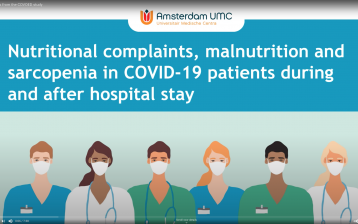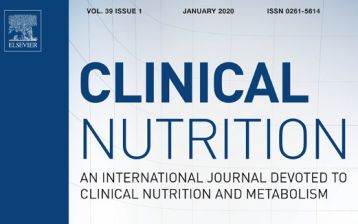
Mandatory malnutrition screening in the hospital using validated instruments has facilitated early detection of patients at risk. However, nutritional status or nutritional risk may change during hospitalization and this will not be detected by admission screening alone. Moreover, with disease burden increasing and length of hospital stay decreasing, nutritional status may not be restored in-hospital and continuation of nutritional care after discharge may be required.

I.M.Y. van Vliet, RD & H. Jager-Wittenaar, RD, PhD
Assessing nutritional status
Standard protocolized nutritional care in the University Medical Center Groningen includes malnutrition screening on admission using the MUST and a dietetic consult for patients at risk. Between March 2016 and July 2017, we performed a practice-based study on 4 wards of the hospital and used the PG-SGA to assess nutritional status at different time points during hospitalization. Data collection was performed within regular care as much as possible, by trained nurses and supported by trained student-researchers. Data was analyzed both cross-sectionally per time point and predischarge as a composite measure (last measurement within 4 days before discharge), and longitudinally in patients with both an admission and predischarge measurement available.
The main findings
- Prevalence of malnutrition is high (31%) at hospital admission, and also high predischarge (36%);
- Malnutrition is more prevalent in patients with a longer length of stay, with more than half of patients assessed as malnourished at day 5 of hospitalization;
- Of the well-nourished patients at admission, 30% was malnourished predischarge, while 82% of malnourished patients at admission remained so.
“We have a responsibility to know or at least investigate how patients are doing while they are under our care, and importantly: not to stop this instantly at discharge, but instead make an effort to actively transfer care to competent hands of colleagues outside the hospital”
These findings stress the importance of nutritional status monitoring during hospitalization, especially in patients with a longer length of stay, and transmural care pathways to ensure continuation of care after discharge.
Since the completion of the study, different efforts have been made to implement nutritional status monitoring during hospitalization. However, this is an ongoing process, and efficacy and feasibility still require more exploration. Also, efforts have been made to establish a regional network for transmural care and facilitate multidisciplinary nutritional care with partners outside the hospital, with nurses in the neighborhood playing a potentially pivotal role in the detection of malnutrition (risk) and monitoring of dietetic treatment efficacy for patients at home.
International journal of applied and basic nutritional science
High prevalence of malnutrition both on hospital admission and predischarge
View article
This project was a cooperation between the University Medical Center Groningen (contact: I.M.Y. van Vliet, RD, i.m.y.van.vliet@umcg.nl) and the Hanze University of Applied Sciences Groningen
(contact: H. Jager-Wittenaar, RD, PhD, ha.jager@pl.hanze.nl).




